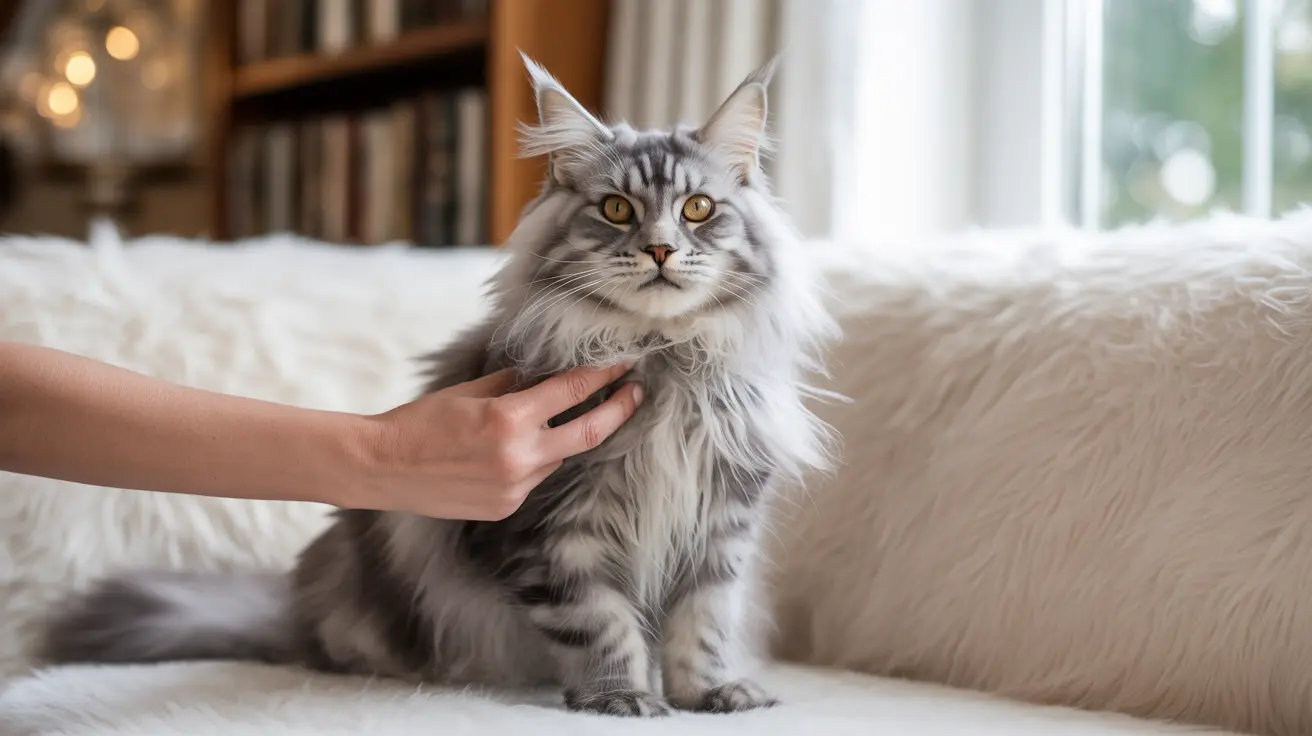Understanding Your Cat's Lymphatic System
As a cat owner, knowing where your cat's lymph nodes are located can be crucial for monitoring their health. These small, bean-shaped organs serve as vital checkpoints in your cat's immune system, filtering out harmful substances and helping fight infections. Understanding their location and normal size can help you detect potential health issues early.
While some lymph nodes are easily detectable through gentle palpation, others are hidden deep within your cat's body. Let's explore the various locations and what you should know about monitoring these important immune system components.
Key Lymph Node Locations in Cats
External Lymph Nodes
The most accessible lymph nodes for cat owners to check are located in several key areas:
- Submandibular nodes: Located beneath the jaw
- Prescapular nodes: Found in front of the shoulders
- Axillary nodes: Positioned in the armpits
- Inguinal nodes: Present in the groin area
- Popliteal nodes: Behind the knees
Internal Lymph Nodes
Several lymph nodes are located inside your cat's body cavity, including:
- Thoracic (chest) nodes
- Mesenteric nodes (in the abdomen)
- Medial iliac nodes
- Gastric and splenic nodes
How to Check Your Cat's Lymph Nodes
Regular monitoring of your cat's external lymph nodes can help detect potential health issues early. Here's how to perform a basic check:
- Choose a time when your cat is relaxed
- Gently run your fingers along the areas where external nodes are located
- Feel for small, pea-sized structures
- Note any unusual swelling or tenderness
Signs of Lymph Node Problems
Watch for these indicators of potential lymph node issues:
- Visible swelling in node locations
- Decreased appetite or activity
- Fever or lethargy
- Difficulty breathing or swallowing
- Unexplained weight loss
When to Contact Your Veterinarian
Seek veterinary care if you notice:
- Enlarged or swollen lymph nodes
- Persistent swelling lasting more than a few days
- Multiple swollen nodes
- Any accompanying symptoms of illness
Frequently Asked Questions
Where are the main lymph nodes located on a cat's body?
The main lymph nodes in cats are found under the jaw (submandibular), in front of the shoulders (prescapular), in the armpits (axillary), in the groin area (inguinal), and behind the knees (popliteal).
How can I feel swollen lymph nodes on my cat at home?
Gently palpate the areas where external lymph nodes are located, using light pressure with your fingertips. Normal lymph nodes should feel like small, firm peas. Swollen nodes will be notably larger and may be tender.
What are common causes of swollen lymph nodes in cats?
Common causes include infections (bacterial, viral, or fungal), inflammation, immune system disorders, and various types of cancer, particularly lymphoma. Vaccinations can also cause temporary swelling.
What symptoms should alert me to lymph node problems in my cat?
Watch for visible swelling in lymph node areas, decreased appetite, lethargy, fever, difficulty breathing or swallowing, and unexplained weight loss. Any combination of these symptoms warrants veterinary attention.
How do veterinarians diagnose and treat swollen lymph nodes in cats?
Veterinarians typically perform physical examinations, blood tests, and may recommend imaging studies like ultrasounds or X-rays. Treatment depends on the underlying cause and may include antibiotics, anti-inflammatory medications, or cancer treatments if necessary.
Conclusion
Understanding the location and normal condition of your cat's lymph nodes is an important part of being a responsible pet parent. Regular monitoring can help you detect potential health issues early, leading to better outcomes for your feline friend. When in doubt, always consult with your veterinarian for professional guidance and care.






